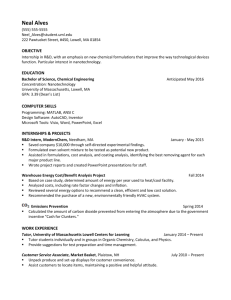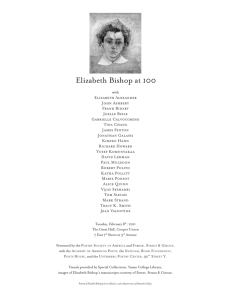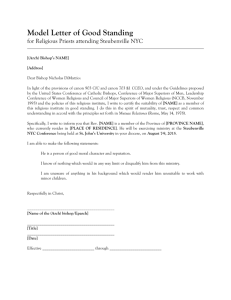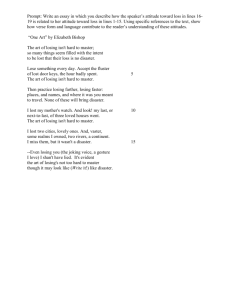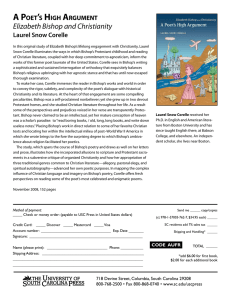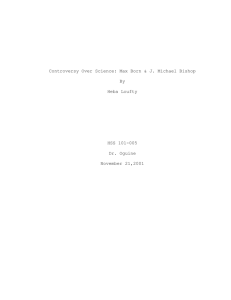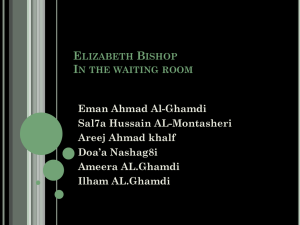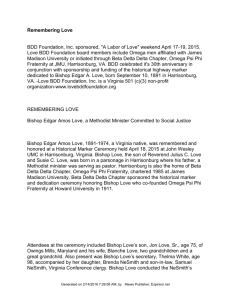FINAL EXAM: CONTEMPORARY AMERICAN LITERATURE Part II
advertisement
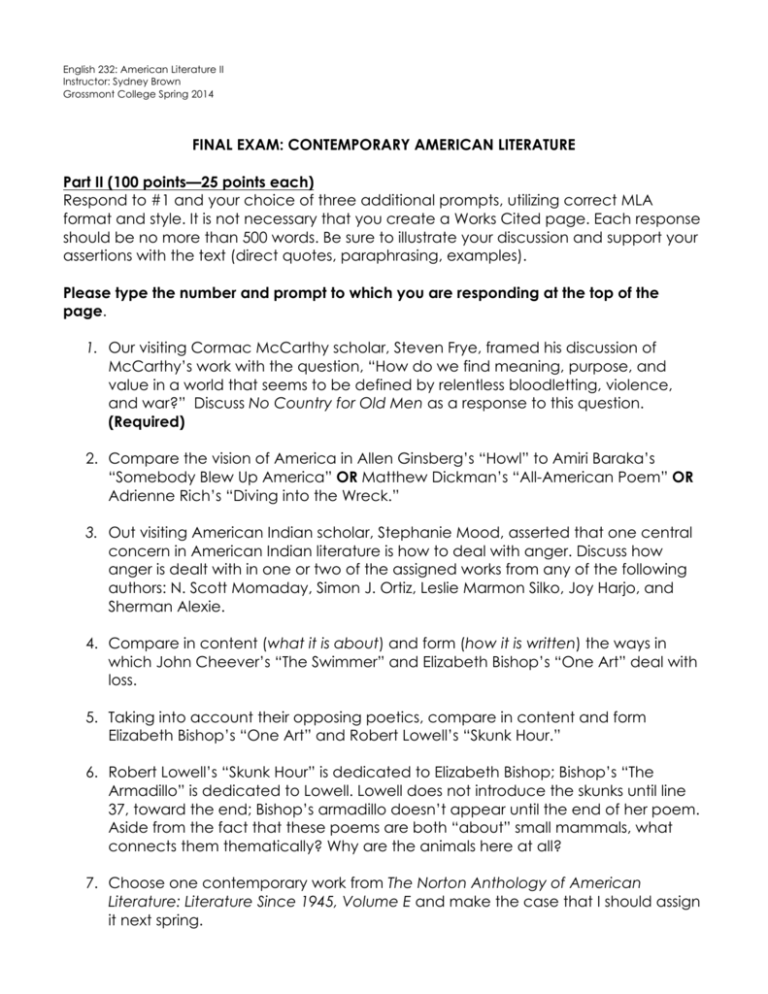
English 232: American Literature II Instructor: Sydney Brown Grossmont College Spring 2014 FINAL EXAM: CONTEMPORARY AMERICAN LITERATURE Part II (100 points—25 points each) Respond to #1 and your choice of three additional prompts, utilizing correct MLA format and style. It is not necessary that you create a Works Cited page. Each response should be no more than 500 words. Be sure to illustrate your discussion and support your assertions with the text (direct quotes, paraphrasing, examples). Please type the number and prompt to which you are responding at the top of the page. 1. Our visiting Cormac McCarthy scholar, Steven Frye, framed his discussion of McCarthy’s work with the question, “How do we find meaning, purpose, and value in a world that seems to be defined by relentless bloodletting, violence, and war?” Discuss No Country for Old Men as a response to this question. (Required) 2. Compare the vision of America in Allen Ginsberg’s “Howl” to Amiri Baraka’s “Somebody Blew Up America” OR Matthew Dickman’s “All-American Poem” OR Adrienne Rich’s “Diving into the Wreck.” 3. Out visiting American Indian scholar, Stephanie Mood, asserted that one central concern in American Indian literature is how to deal with anger. Discuss how anger is dealt with in one or two of the assigned works from any of the following authors: N. Scott Momaday, Simon J. Ortiz, Leslie Marmon Silko, Joy Harjo, and Sherman Alexie. 4. Compare in content (what it is about) and form (how it is written) the ways in which John Cheever’s “The Swimmer” and Elizabeth Bishop’s “One Art” deal with loss. 5. Taking into account their opposing poetics, compare in content and form Elizabeth Bishop’s “One Art” and Robert Lowell’s “Skunk Hour.” 6. Robert Lowell’s “Skunk Hour” is dedicated to Elizabeth Bishop; Bishop’s “The Armadillo” is dedicated to Lowell. Lowell does not introduce the skunks until line 37, toward the end; Bishop’s armadillo doesn’t appear until the end of her poem. Aside from the fact that these poems are both “about” small mammals, what connects them thematically? Why are the animals here at all? 7. Choose one contemporary work from The Norton Anthology of American Literature: Literature Since 1945, Volume E and make the case that I should assign it next spring.
![An approach to answering the question about Elizabeth Bishop[1]](http://s3.studylib.net/store/data/008032916_1-b08716e78f328a4fda7465a9fffa5aba-300x300.png)
